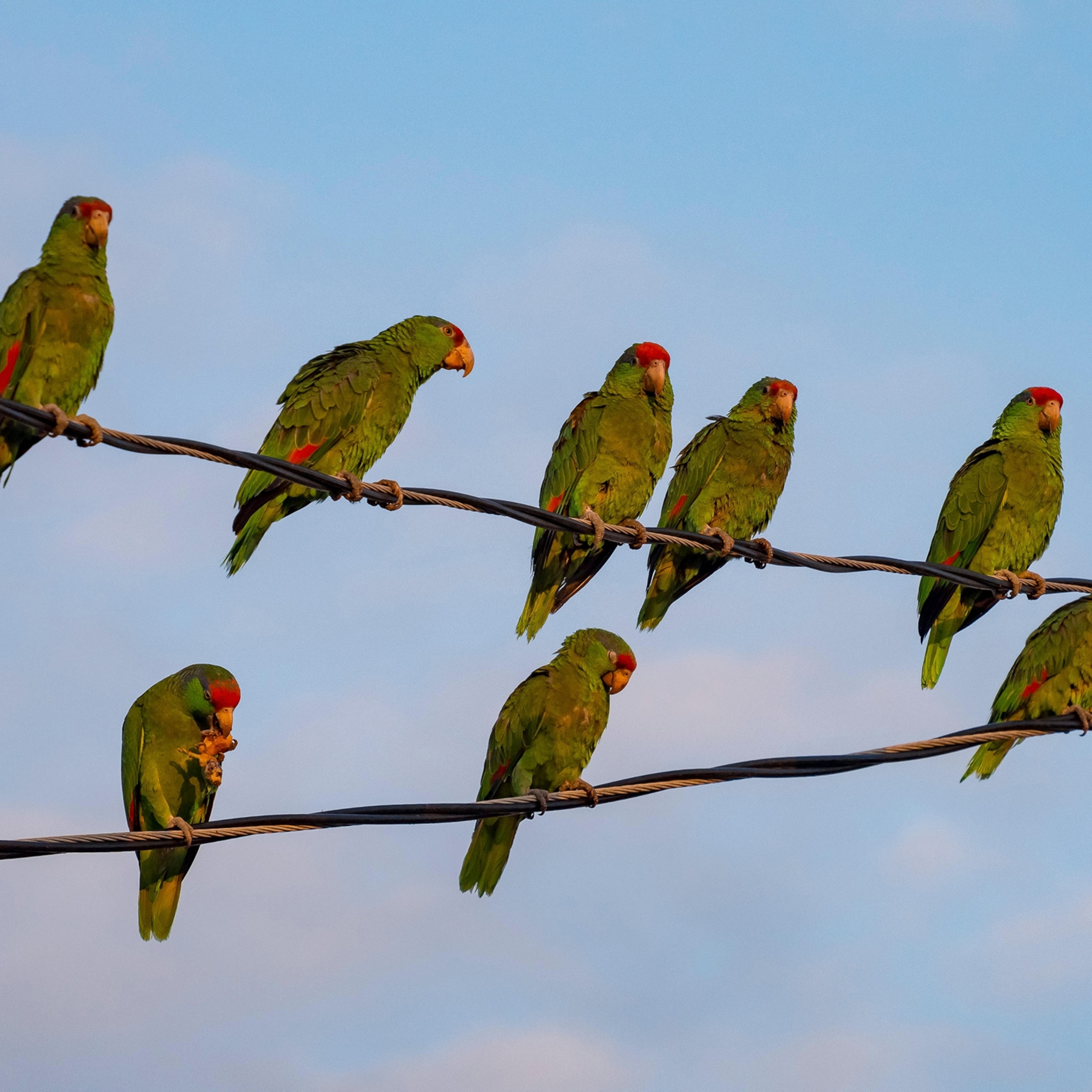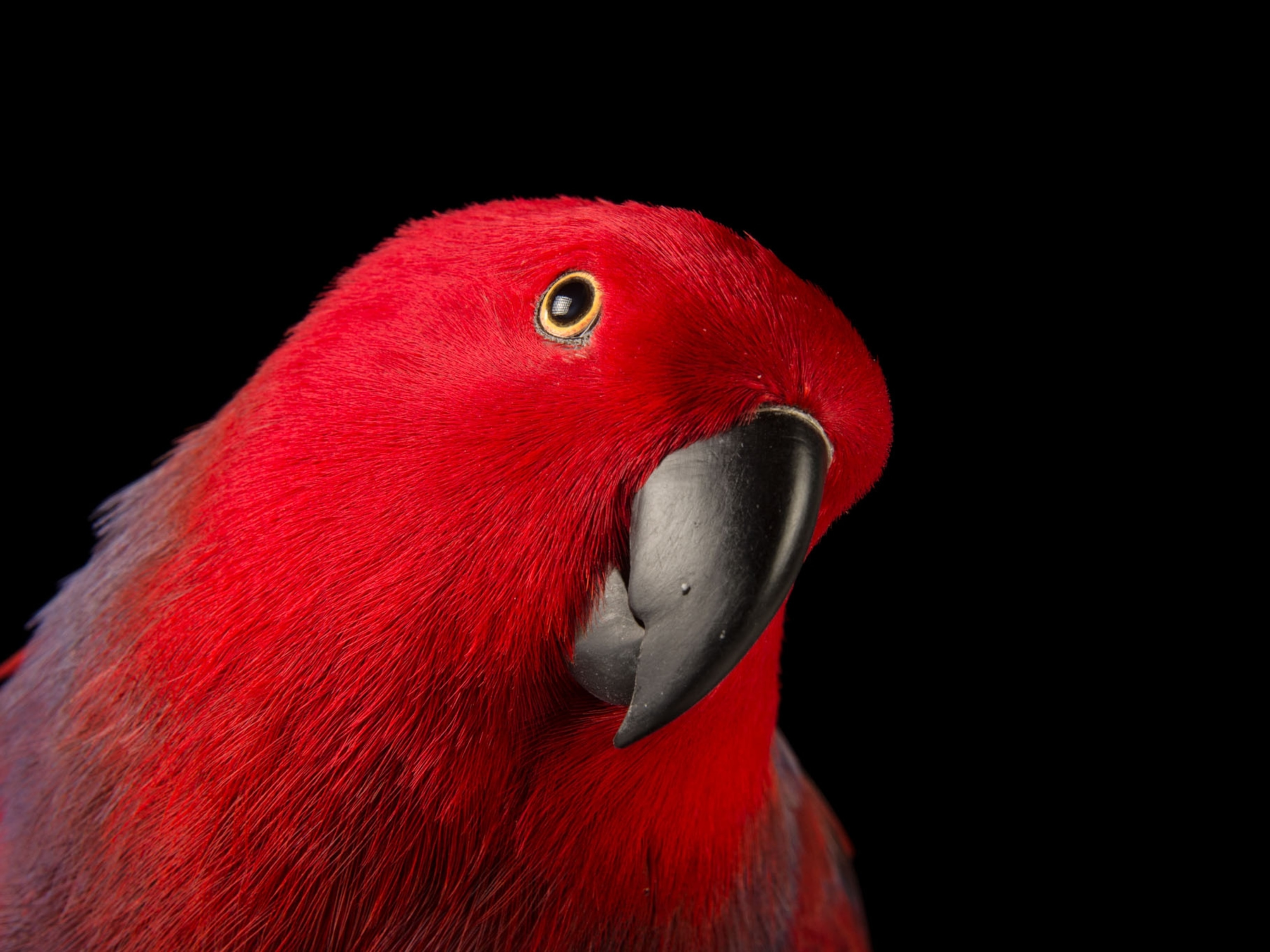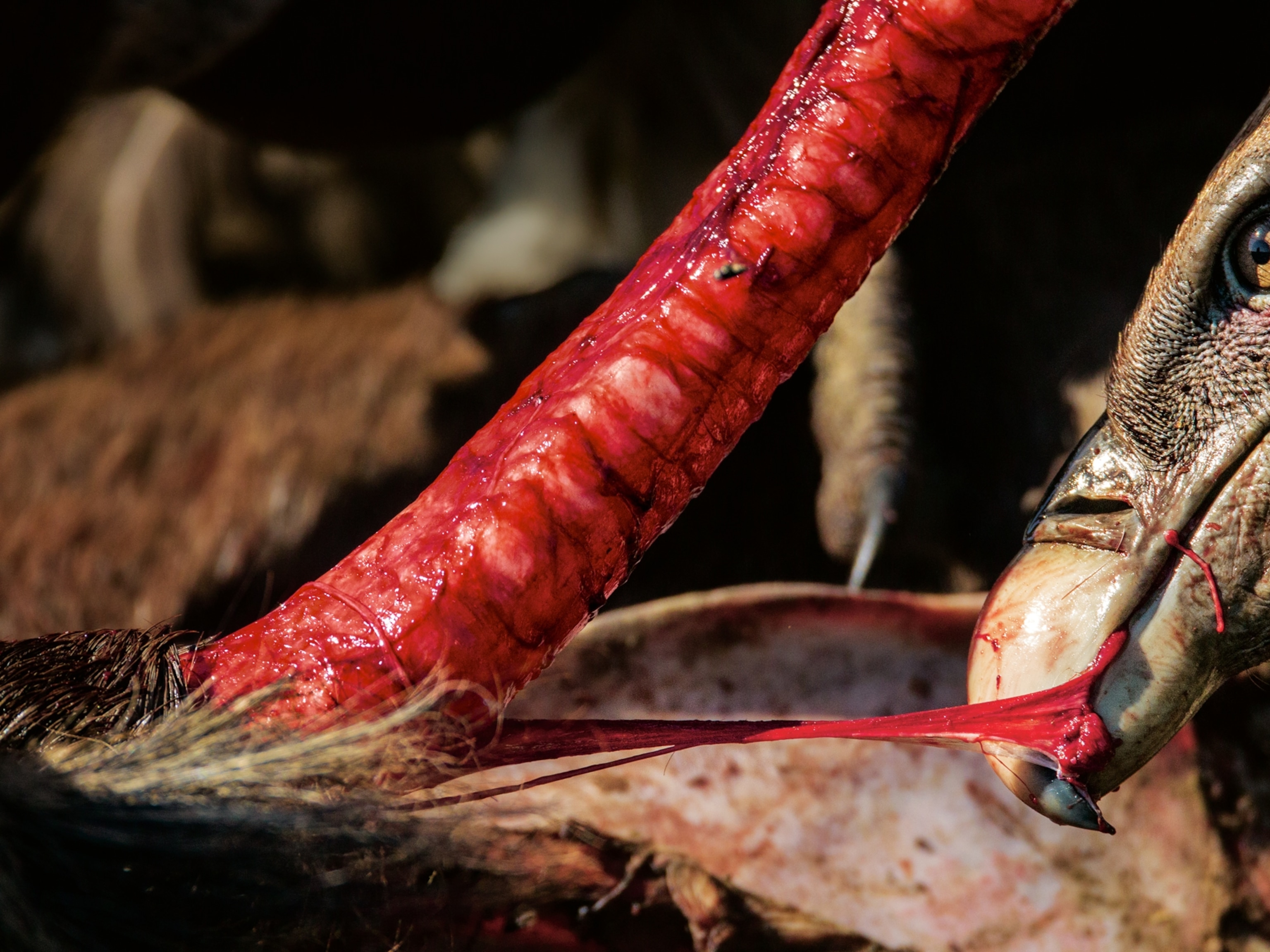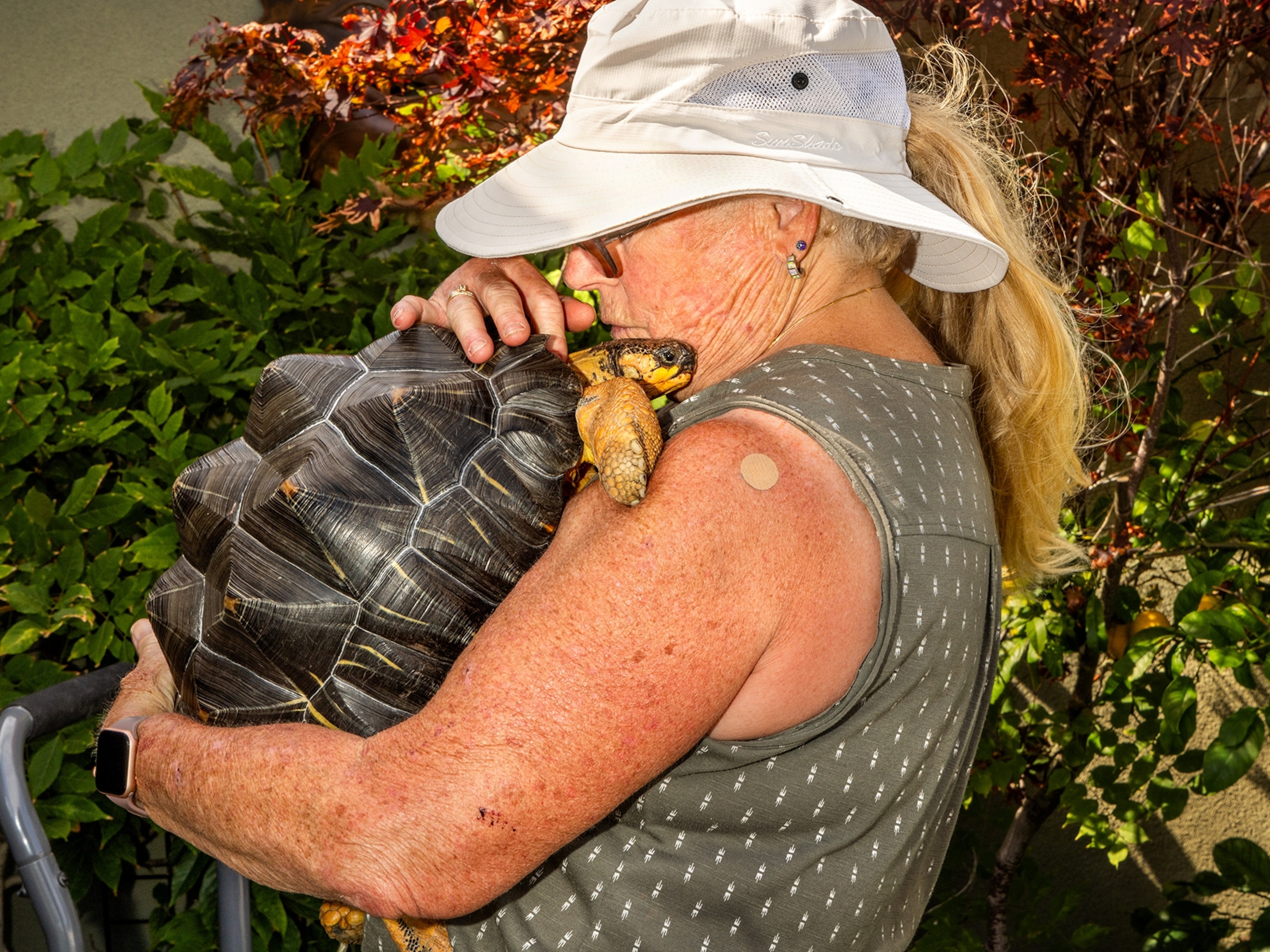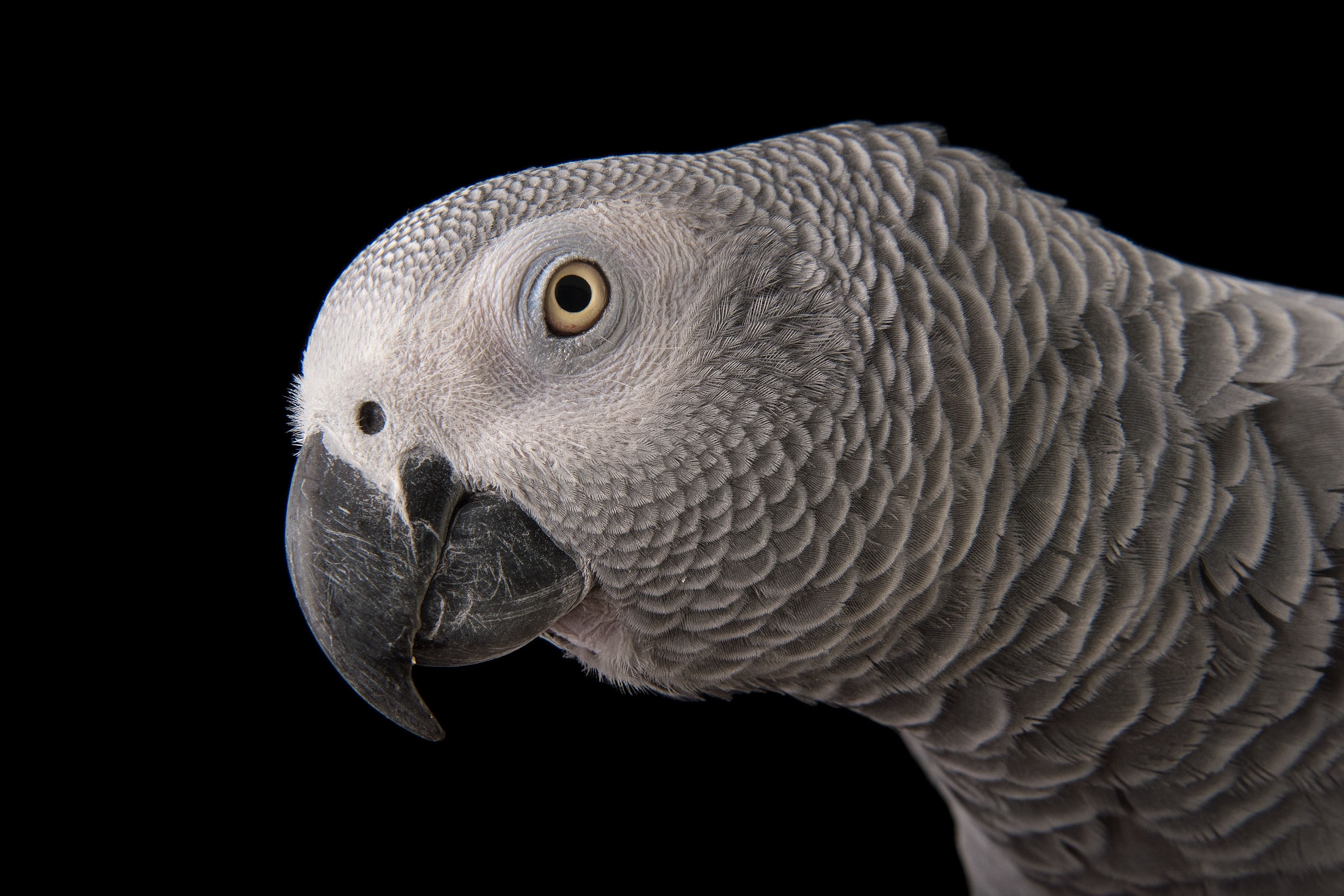
This Popular Parrot 'Talks' Like Us. But We're Silencing It.
Scientists are using forensic techniques to help save African gray parrots, among the most illegally trafficked birds in the world.
Durban, South Africa — In a lush aviary near Durban, South Africa, an African gray parrot hops toward me, babbling a language I can’t understand.
“He’s speaking Zulu,” explains breeder William Horsfield, whose 700 birds constantly chatter and hop from perch to perch in his immaculate facility’s garden-like setting. Many are African grays, the best mimic of the 350 known parrot species—and thus a highly coveted pet.
Many of his grays have been rescued, like this parrot chatting me up in Zulu. They’re either former pets, some abandoned by their owners, or animals confiscated from the illegal pet trade, like the bird found in Brazzaville, the Republic of the Congo, with a rope tied around its leg.
Some of the parrots here could join the 1.3 million or more gray parrots that have been exported legally from Africa over the past four decades. And that makes them the lucky ones. (Read how Africa's most endangered parrot—the Cape parrot—is fighting for survival.)
Hundreds of thousands of others—maybe more—have died in transit or been snatched illegally from the rain forests of West and Central Africa.
In fact, the African gray parrot is now listed as endangered, raising fears that the world’s most popular pet bird may become one of the rarest.
Now, a dedicated mix of conservationists, geneticists, government officials, and more are joining forces to track these illegal captures and try to stop them from happening in the first place. Already, they’ve developed scientific methods that could quickly discern whether a parrot has been unlawfully stolen from the forest.
But this hasn’t stopped the harvest of wild birds in places where they’re relatively easy to catch, like the Democratic Republic of the Congo, or DRC, and neighboring the Republic of the Congo.
“Often people are blown away to hear parrots are still trapped in the wild—it happens in huge quantities, with very little oversight,” says Rowan Martin, director of the Africa Conservation Program at the World Parrot Trust.
Famous, Yet Still Little Known
Grays, like most parrots, have a quirk that makes them especially vulnerable. They nest only in pre-existing cavities within large, old trees—they can’t make their own holes.
This is why deforestation hits them so hard: Parrot parents looking to settle down “seem to target the exact trees that humans target first,” says Stuart Marsden, who studies parrots at Manchester Metropolitan University in the U.K.
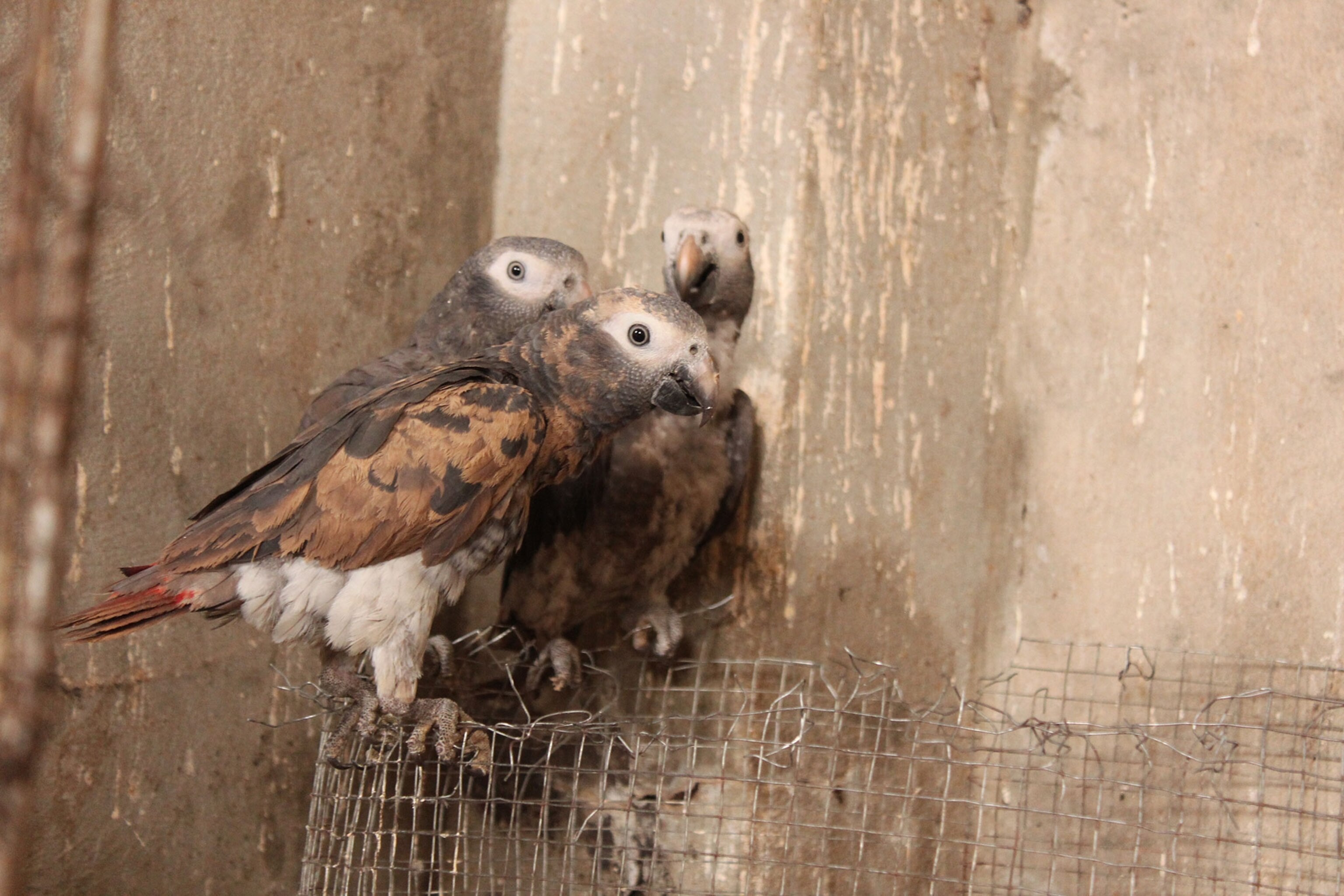
What’s more, each evening, parrots roost and socialize in these tall trees—“the nightclubs of the parrot world,” as Marsden puts it—making them sitting ducks. Trappers tear down the trees to pluck babies from nests or put out wooden sticks covered with glue to ensnare adults en masse. (Read more about the illegal trade in gray parrots.)
For such a well-loved animal, Marsden adds, little is known about African grays in the wild. One of the first studies of their decline, in 2016, revealed that in Ghana, populations have fallen by 99 percent. A bird as familiar to Ghanaians as a street pigeon, and that once raided fruit crops in big noisy flocks, is all but gone.
Today, as many as 18,000 birds may be illegally harvested in the DRC each year, packed into crowded cargo boxes or stuffed into hand luggage. The majority of wild-caught grays probably die in transit.
Wildlife Crime Fighter
Meanwhile, scientific crime-fighters are intent on stemming this trade. One of them is ornithologist Pepper Trail, who in an Oregon laboratory gently holds an ornamental shawl made of vibrant blue, yellow, and orange feathers.
Made in Brazil from orange-winged Amazon and blue-and-yellow macaw feathers, it’s one of many artifacts he’s analyzed in his 20 years as a forensic ornithologist at the world’s only laboratory devoted to wildlife crime.
So far, Trail has identified over 750 bird species submitted to Ashland’s National Fish and Wildlife Service Forensics Laboratory—and counting.
“It can be a sad job,” he says. “Everything I look at is dead.” (Read more about Trail's forensic work in the magazine.)
It can also be a difficult job if only a feather or two are available. Luckily, Trail has many tools at his disposal, from genetics and pathology laboratories to a whole reference “library” of dead animals.
In one sealed-off room pungent with decaying flesh, flesh-eating beetles chow down on several parrot corpses, including an African gray. Insects scour the creature into a clean skeleton that could someday be a reference in a criminal investigation.
He says wildlife crime has effectively gone underground when it comes to parrots.
Born Wild, or Captive?
Back at the breeding facility in South Africa, Horsfield prioritizes his birds’ welfare, selling only pairs (a solitary parrot is more likely to be depressed and self-mutilate), mostly to other breeders, and discouraging all but the most serious buyers from pet grays.
“Sadly, he says, “you’ll always find someone to get what you want,” referring to industrial-style facilities that house up to 1,000 breeding pairs of gray parrots.
The law is starting to catch up with such places. In 2016, the Convention on International Trade in Endangered Species, or CITES, which monitors international trade in rare species, made the controversial decision to ban all international trade in wild African grays, except in “exceptional circumstances.” (Read why birds matter, and are worth protecting.)
“It’s a victory in terms of a message being sent out that this trade is poorly managed, it’s having a big effect, and the world doesn’t agree with it,” says Marsden.
To continue selling African grays abroad, breeders worldwide must now prove to CITES inspectors that their birds are all captive-raised and not wild-caught—a tall order when much of their breeding stock originally came from the wild in central Africa.

Indeed, many parrot breeders have already dropped out of the business—only a few thousand grays were exported in 2017, says Mpho Tijane, who coordinates CITES implementation for South Africa.
“For some people, it’s their main source of income. Overnight, it’s gone to a standstill,” adds Ben Minnaar, a longtime bird breeder in Pretoria.
Horsfield fears the new regulation will cause some breeders to “bullshit” their birds—to launder animals with uncertain origins as captive-bred.
This “paperwork smuggling” is already widespread among African grays: Illegal traders forge paperwork and perhaps bribe officials to list wild-caught birds as captive-bred, says Susan Lieberman, an expert in international wildlife trade at the Wildlife Conservation Society.
Year of the Bird
In 1918 Congress passed the Migratory Bird Treaty Act to protect birds from wanton killing. To celebrate the centennial, National Geographic is partnering with the National Audubon Society, BirdLife International, and the Cornell Lab of Ornithology to declare 2018 the Year of the Bird. Sign the pledge to find out this month's action and share your actions using #BirdYourWorld to increase your impact.
“This would stop if people didn’t buy birds coming out of the wild,” she says. “It’s just greed—people wanting a bird that’s cheaper. One born in captivity is going to be more expensive.”
Most captive-born birds get a permanent ID ring on its leg as a chick, but people have figured out how to force one onto a wild bird—meaning it’s not always easy to tell the difference.
Tracing Origins
But there might be a way.
In her sunny, high-ceilinged laboratory at the University of KwaZulu-Natal, Sandi Willows-Munro rummages in a freezer overflowing with dead birds and vulture feathers, looking for a confiscated shipment of around 200 gray parrots that died last year at Durban’s King Shaka International Airport.
“Carcasses come to me—I get strange things,” the geneticist quips.
In death, these birds may someday help their wild kin. Willows-Munro hopes to develop a gene-based method for determining whether a bird is wild-caught or captive-bred by sussing out distinct genetic profiles. Because captive birds tend to be slightly inbred, certain versions of a gene become predominant and can serve as a kind of fingerprint for captivity. (Read about the black market trade in hummingbirds.)
Ostensibly, such DNA work could lead to a test that allows a breeder, potential pet owner, or airport inspector to take a sample from a bird and reveal its origins.
Craig Symes, an ornithologist formerly at South Africa’s University of the Witwatersrand, has investigated a similar approach using chemical isotopes. He’s found that analyzing isotopes—or different varieties of an element—in African gray parrots’ feathers could reveal their diets, and therefore their origins.
For instance, captive birds eat more of certain kinds of plants with a telltale carbon signature—such as corn—than do their wild counterparts, whose diet is much more diverse.
“It could be evidence in any trial where someone is claiming that these birds are captive-bred when they are wild-caught,” Symes says.
"It Never Gets Old"
Meanwhile, breeders such as Minnaar plan to keep following their passion. “I love the rearing of parrots—taking care of the eggs, getting the baby out of its shell,” Minnaar tells me over the incessant squawking of his “baby room.”
Not far from his house in the South African countryside, he has set up rows of incubators filled with chicks—mostly cockatoos—at various stages of development, resembling a sort of parrot NICU. (See National Geographic editors' favorite pictures of birds.)
And right now, they’re all hungry.
Starting with the newborns, Minnaar reaches into the incubator and syringe-feeds the open-mouthed chicks. As it’s fed, each pink, gangly baby flaps its little wings happily.
“It never gets old,” Minnaar says, smiling.


